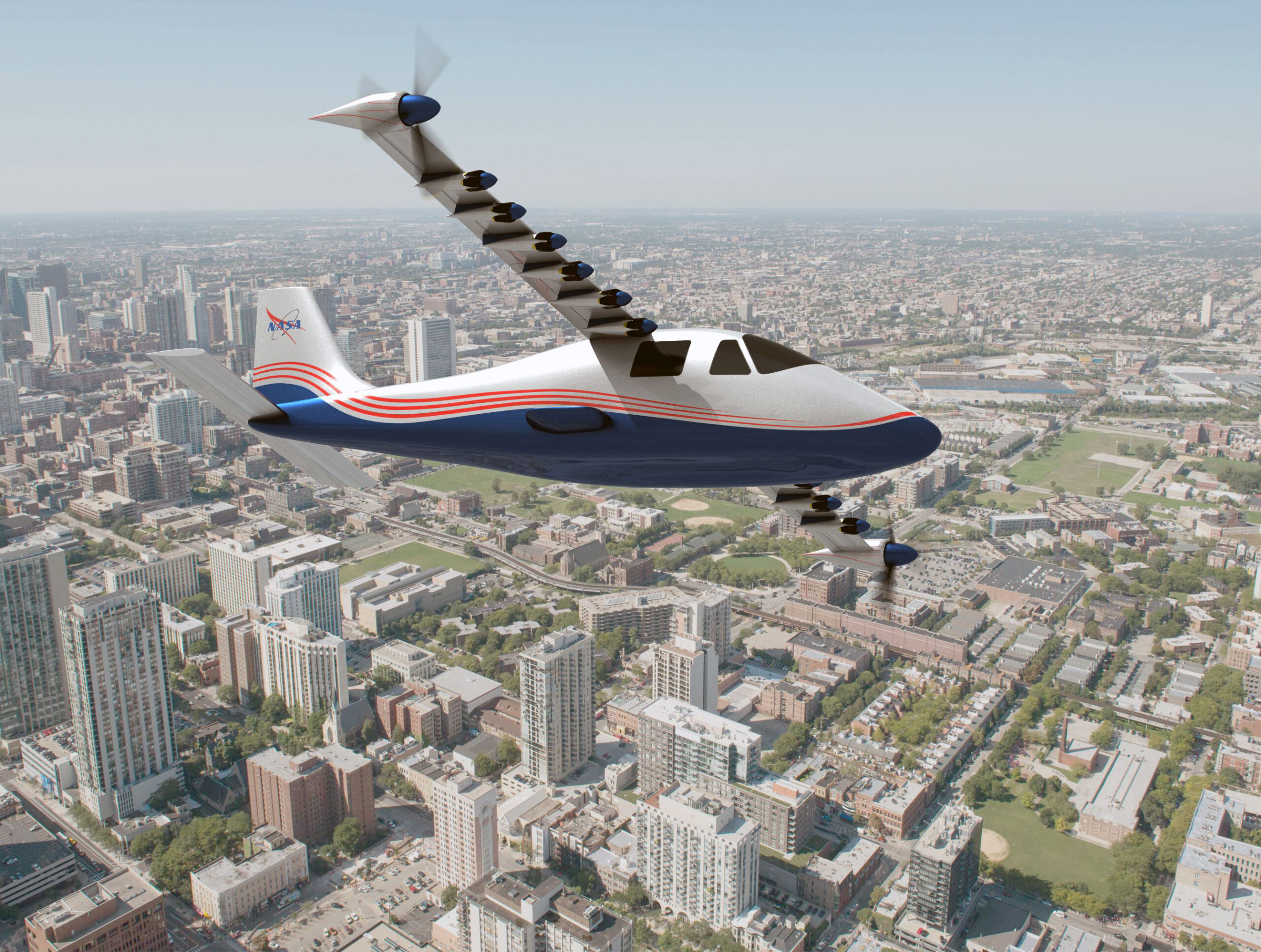Some people think NASA is all about space exploration, and although that is a significant part of the work they do, the first “A” in NASA stands for Aeronautics. The National Aeronautics and Space Administration (NASA) was founded in 1958. At that time all of the National Advisory Committee on Aeronautics (NACA) facilities were absorbed into the newly formed NASA. The NACA facilities were created in 1915 to research aviation concerns such as aerodynamics, flight testing of new designs, safety, increased performance and increased altitude. NASA continues this ongoing work today with a new series of experimental or X-planes. An exciting new X-plane currently under construction is the X-57 Maxwell. The X-57 design is unique for several reasons, not the least of which is that it will not carry any jet fuel as it has an all electric propulsion system. https://www.nasa.gov/specials/X57/
The final configuration of the aircraft will feature 14 electric motors and propellers and will be powered by lithium ion batteries. through the development of the new airplane, testing and analysis has allowed for changes to be incorporated into the final configuration. Changing the area of the wing allowed a reduction of the weight for each engine from 125 pounds per engine originally to just 57 pounds per engine now.
“We’ve turned a corner from system design and lab tests, to turning it over to the NASA flight systems and operations engineers to actually operate the vehicle,” said Sean Clarke, NASA’s X-57 principal investigator. The first taxi tests and flights are planned for later in 2021.
An exciting advance in the smaller high-lift propellers that run along the leading edge of each wing will be seen after the X-57 reaches cruising speed. The high-lift propellers will deactivate and the blades will fold into the nacelles to reduce drag during cruise and increase the efficiency of the airplane. The larger wingtip motors will be all that is needed for the cruise stage of flight. This unique configuration will also provide a quieter flight experience for those flying onboard the aircraft as well as to people on the ground. Some of the key stats for the aircraft can be found here. https://www.nasa.gov/centers/armstrong/news/FactSheets/FS-109.html
In addition to the unique 5-blade folding propellers, zero in-flight carbon emissions and a 500 percent increase in high-speed cruise efficiency, the X-57 hopes to develop certification standards for emerging electric aircraft markets. Much like the electric car market has matured in recent years to allow for faster design and introduction of new electric car models to the consumer market, so the X-57 Maxwell hopes to provide a path forward and encourage other commercial aircraft manufacturers to see market for electric planes.
In talking to students about unique designs such as the X-57 Maxwell, it can be instructive to have them try their hand at other unconventional seeming designs such as the Ring Wing https://www.jpl.nasa.gov/edu/teach/activity/ring-wing-glider/
For a deeper dive into the history of X-planes at NASA and what the planes were built to test https://www.nasa.gov/centers/armstrong/images/X-Planes/index.html





Leave A Comment